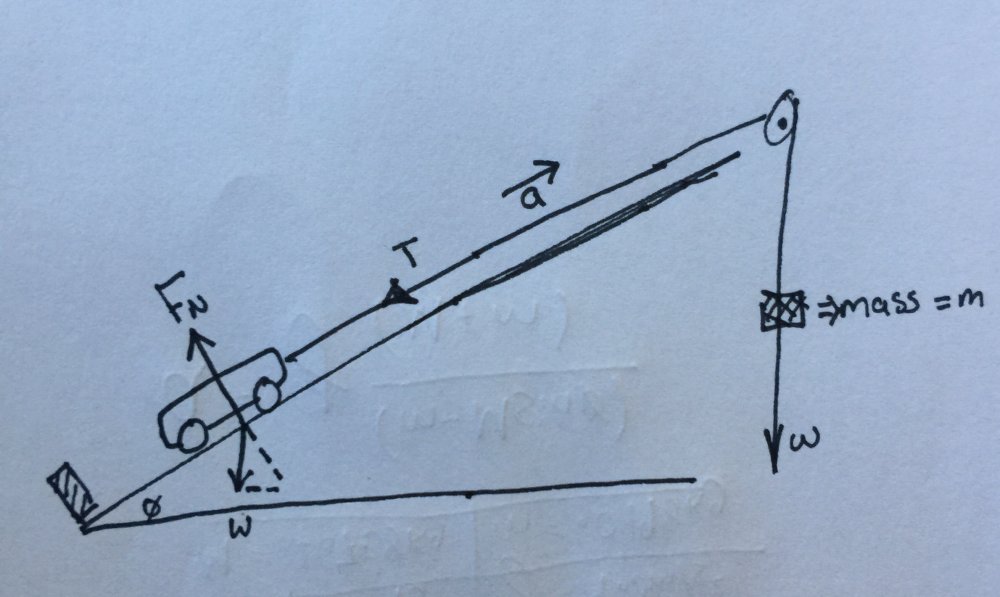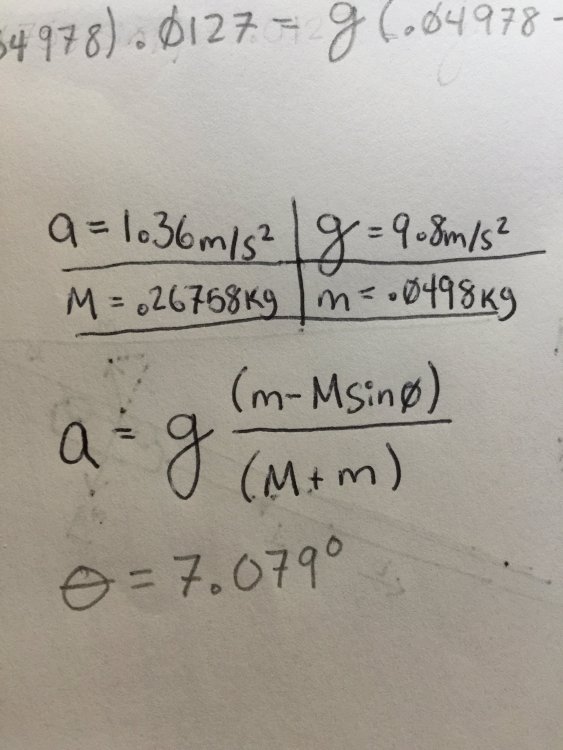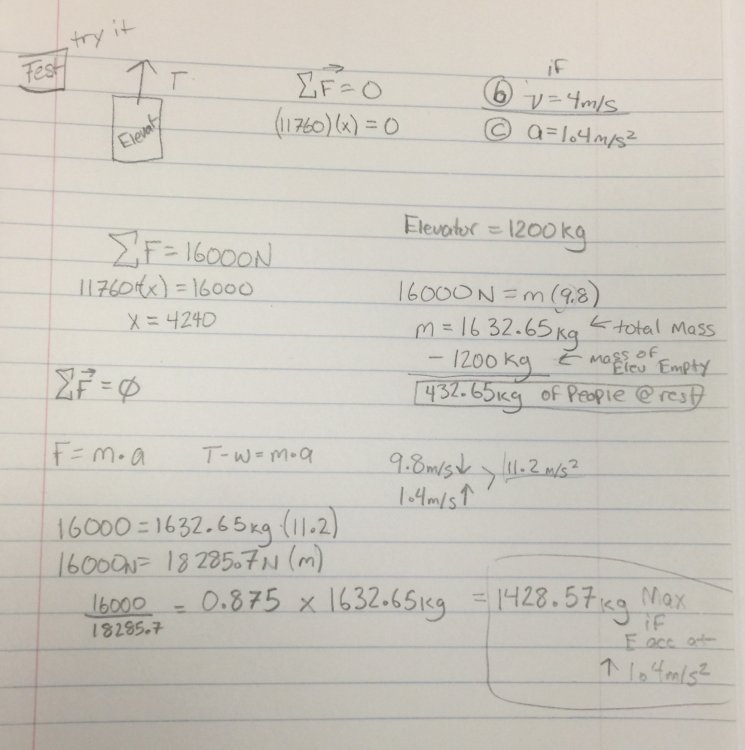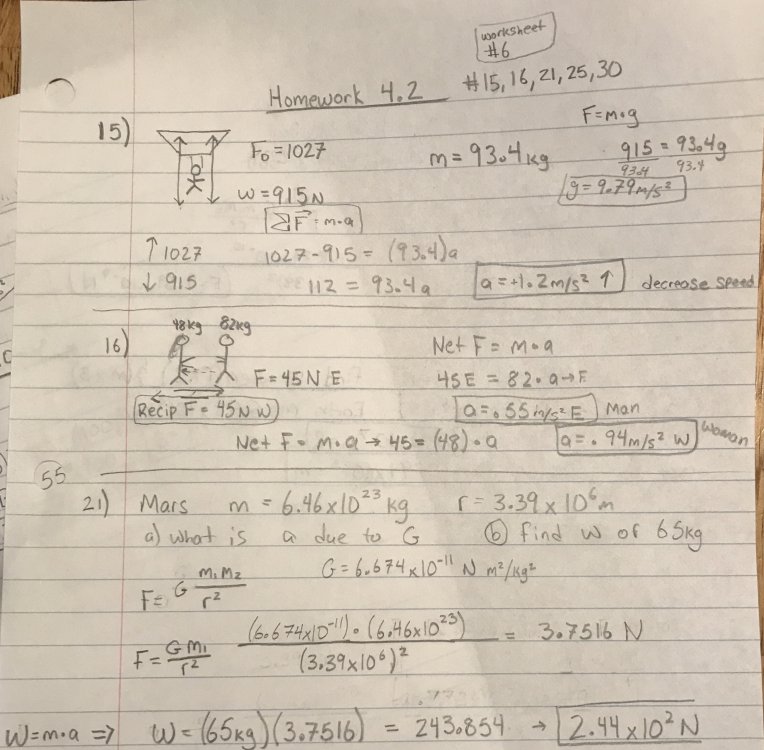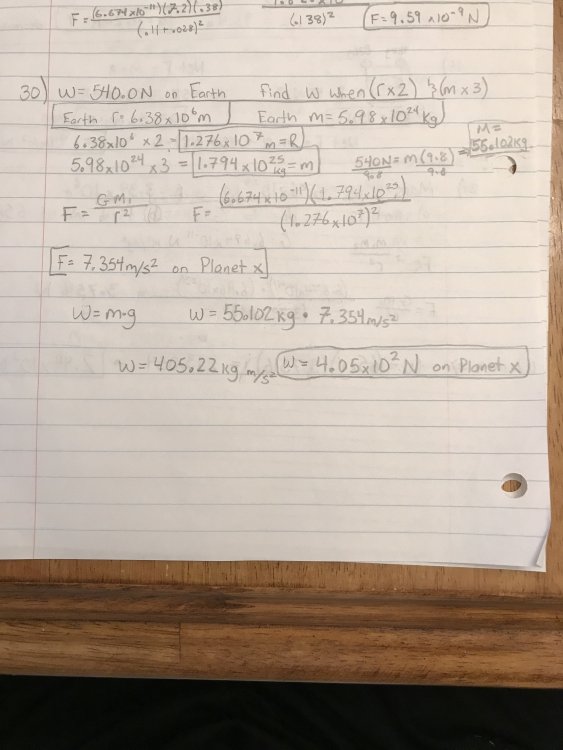-
Posts
51 -
Joined
-
Last visited
Content Type
Profiles
Forums
Events
Everything posted by FrankP
-
Ok so this is not my strong subject however I need to understand it in order to write this one part of a neuroscience paper. I have been doing a lot of reading online and I have very finite notes on the subject and want to understand it a little better so I don't butcher it. So Magnocells are responsible for the rapid adaptation of the eye. I don't understand why or how. My notes state that they are responsible for a large receptive field is this why they are rapidly adapting because of the size of the receptive field if they were constantly responding they would require too much room in the cortex to process the visual information? Additionally I am not quite sure the process biochemically of how the adaptation works. Is it inhibitory neurotransmitters that prevent the Magnocells from continuing to fire the entire duration of the stimulus or is it the fact that the neurotransmitters only transmit at a action potential and the continued stimulus is a graded potential that does not reach the required threshold to cause firing? Lastly, in the sematosensory system I understand that the Meissner and Pacinian corpuscles are the ones that adapt to continuous pressure. My question is identical to the visual one, why and how? I understand that touch is something we adapt to and I know that because my teacher stated that the example of you can not feel your socks on your feet while you sit perfectly still however if you move in the slightest you can feel them again. I can fully wrap my head around such an example but I need neuroscience terminology so that I can look it up and understand it better because I am trying to write very specifically how this process/ system works. I understand that Meissners detects movement across the skin and so when there is no movement across the skin (such as sock) there is no firing of those neurons. I do understand vaguely how pacinian corpuscles adapt because of the anatomy of the end organ. Since it is layered with viscous solution between those layers the pressure that compresses the end organ is then resisted by the pacinian corepuscle itself and begins to ignore the stimulus. Why do both of these organs do this? I know this might be complicated to explain I don't need to write a dissertation however i just need helpful hints, descriptions or whatever in order to help me figure out what to read. I have read the book for the class and I am not really getting any more clarification.
-

Why do we have to write so many highschool papers?
FrankP replied to Jingori's topic in Homework Help
In my opinion is that ones ability to compose thoughts collectively and cohesively on paper reflect their ability to think. Progressive education tells us we should be good at a multitude of skills which may not have equal value to everyone. However, if you were never exposed to said subjects you may not find what interests you. So for me I was a kid in high school who got good grades by virtue of sheer ability. I did what was needed to pass and that’s as far as that went. I literally got A-‘s and B+’s without doing anything and was considered lazy. Mind you that this occurred in one of the most competitive areas in the US education system. Now at 26 years old, i’m back in college milking the education system for everything they have. Moreover, what Interests you now will likely change, and when that happens having a diverse educational background will pay dividends. Think of it as having a Batman utility belt of scholastic skills. They will all come in handy at some point in time. But in the short term, dissecting each assignment based on translatability In your day to day is too close minded. Most daily activities would be rendered moot with such logic anyway. -
The calculator is in the proper mode I checked that first. Something is wrong with the math not the calculator I am just not able to figure out what is wrong with the math hence my inquiry. I have asked my lab teacher as well who does not respond to emails so as expected 2 weeks no response.
-
Hello so I am having an issue with rectifying the math for this problem. I have the answer that my teacher gave me which is the answer specific to my lab but on my own I can not prove the math to be correct. I actually cant even get a number at all my calculator is giving me a constant error. Background on the problem: Car attached to a string with a mass suspended on it passes through a photo-gate connected to a smart timer which reads the acceleration. These trials are performed on an incline ramp which has an unknown angle of incline. This is the problem we want to figure out besides tension and all that we want to determine what the angle of the incline is based on the information given. I have worked this math more than 20 times and I have yet to get a single answer. I am going to send a picture of the equation I am supposed to be using as well as the number that the angle is supposed to work out to be. a = acceleration (average) M = mass of car with string m = mass suspended on end of string g = gravity (standard 9.8) thank you guys in advance I cant figure why this is giving me issues.
-
Woah I was reading over this post and thought I saw it get a little intense here but then I realized you were actually helping! haha Ill just keep reading quietly in the background
-

Just took a test can't figure out how to solve (Elevator Physics Problem)
FrankP replied to FrankP's topic in Homework Help
Ok so when I redid the problem today I realized that all along I had 228 as my answer I just never subtracted from the mass of the elevator. So technically the math checks out I guess I hope that is what I got on the test because now I can't remember but one can only hope... For the future though I do appreciate the help as I know this is only the beginning of elevator problems and more advanced vector based problems so I do appreciate it. -

Just took a test can't figure out how to solve (Elevator Physics Problem)
FrankP replied to FrankP's topic in Homework Help
Interesting how you worked out the problem i’m going to have to try this again tomorrow now that I saw the comments! Thanks for the help I wish I had a good example like this to work on before taking the test lol -

Just took a test can't figure out how to solve (Elevator Physics Problem)
FrankP replied to FrankP's topic in Homework Help
Ok so I am going to basically work backwards with your numbers to try and rectify the math because I know I am going to need to be able to do this on my own going forward. Thank you again -
Ok so so far I have not struggled with the elevator problems however, the one on the test I was a little off in my method and couldn't get the answer. The question is something like: An elevator has a cable with the max force of 16,000N, the mass of the elevator is 1200kg (a)what is the maximum mass of the passengers if the elevator is at rest (this part I got, I think)? (b) What is the max capacity if the elevator is moving at a constant v of 4m/s (c) what is the max capacity if the elevator is accelerating up at 1.4m/s^2? I got the same answer for (a) & (b) which was approximately 435kg for (c) I got something like .85 which I then multiplied by the 1635kg I got for part a and b and got something ~1390kg or ~1400kg when the elevator is accelerating up. What did I do wrong? Edit: I replicated my work just now on a scrap paper. I just attached it I skipped (b) because I got the same answer when I did it in class so if I am wrong (which i'm at least 70% sure I am) I would like to know if someone can explain to me where I went wrong.
-

Homework problems with Newton’s laws and force
FrankP replied to FrankP's topic in Classical Physics
Thank you for the help my homework ended up being right now time to prepare for the test! haha -

Homework problems with Newton’s laws and force
FrankP replied to FrankP's topic in Classical Physics
Ok was able to get an answer which would seem to be correct logically however the only question I have is why is the answer to part one considered to acceleration force of g on mars and not the force? The book states a=3.75m/s^2 I got F=3.75N in the future should I become conditioned to understand that this will be the gravitational force in m/s^2 as opposed to N? -

Homework problems with Newton’s laws and force
FrankP replied to FrankP's topic in Classical Physics
Ok as soon as I get home I’ll post my work and see if I have the right methods thank you guys I figured I was overthinking the problem because I have not had issues with the math or logic yet... so usually it’s just me making things harder on myself I appreciate it -

Homework problems with Newton’s laws and force
FrankP replied to FrankP's topic in Classical Physics
The F=G(m1*m2/r^2) equation? Yea I have learned by that but struggling to understand the application here because doesn’t that determine the force of attraction of two objects with specific masses? In example 21 what is the dummy mass that I would use to calculate the force of attraction initially? I could do it for tomorrow the 65kg person but part one I can’t figure it out. And for 30 I looked up the question on google first and it appears they are arbitrary calculations so it doesn’t help me. Thanks again -
Ok so I have not really had any problems with the homework and or sample problems to date, however this homework assignment my teacher has struggled to explain to us for whatever reason so my notes are very all over the place. This homework is not graded however it serves as our test review which will be on Monday so I want to figure this out ASAP so I can begin to practice them. Using the formulas that I currently have I would not be able to solve this unless I’m overlooking something. Thank you in advance. P.S. there should be 2 images attached
-
Ok I will check to see if I can find anything online as it pertains to general chromatography first. I actually forgot that TLC is only one aspect of Chromatography, since it is the only form we use at my school. Thank you I appreciate it
-
About TLC (curiosity) So we do a lot of TLC analysis as well as melting point testing in my organic chemistry class this year. The reason I am asking more in depth on TLC is I get the concept of TLC. You use a board and solvent to extract and confirm purity of a polar substance based on the resulting Rf values. This makes sense to me through and through. My curiosity is that I want to understand better the intricate workings of this. I am not good enough to look at the molecular structures of say for example Naphthalene, Benzoic Acid, Aspirin, Caffeine etc. and say ok out of these 5 the order should ideally be (X,Y,Z…) I believe this stems from my lack of grasp on the solvents being used. I feel that still I am not confident in explaining why some substance is more ideal as a solvent than is another. I know it is based on affinity of that molecule and its polarity to the solvent. Example is why hexane is used in extracting non-polar molecules from water as it is a better solvent for such. I also understand that polar covalent bonds are water soluble while non-polar covalent are more soluble in oil. I guess I am looking for suggestions on where to read more about TLC I looked in my colleges library yesterday but there was a book that was written in 1970’s and was extremely advanced for my base knowledge of organic chemistry or chemistry as a whole for that matter. This is my spring break week so I have some time to do some reading I know that when I come back we are going to be hammered with work and on the final there will likely be several questions that involve explaining TLC and how it works. Thank you, in advance as always!
-
I tend to agree we ended up having to do only 2 trials of each I think because the lab was such a short period. We did about an hour of intro, expectations etc.. so that significantly ate into the time plus we had to confirm all the contents for our lab lockers which took about 25 minutes. I would have liked to get more conclusive data to be honest because I feel a little funny making a conclusion based off 2 trials.
-
Hello again everyone! So this post is less dramatic and doomsday-ish then all my others have been as it pertains to chemistry at least. Lab 1 was Monday for me, our aim was to use the Thomas-Hoover Apparatus to discover the melting point of our unknowns. So I wanted to first state that I understand how to perform the lab, as a small group we did well on the lab experiment (except for one minor error which happened on our first trial but that was quickly adjusted). I just wanted to post to get more insightful opinions on how I can formulate my ideas on why things went the way they did. The chemicals we used for my group were: biphenyl [Melting Point] 69-72 °C 2,5-dimethyl phenol [Melting Point] 68-71°C So my group suspected that our compound was 2,5-dimethyl phenol because trial one of the strict non-mixed MP test showed a range of 69-71. Then trial 2 was a mixed where we took biphenyl and the unknown as well as 2,5-dimethyl phenol and the unknown and ran 2 separate trials to see if the melting point was altered at all within the trials. We discovered that the trial with biphenyl had a slightly higher melting point as was 2,5-dimethyl phenol + unknown. So we were able to confirm our original hypothesis that our unknown was 2,5-dimethyl phenol. So my question is (drumroll please lol jk) given the situation that happened above in our experiment would it be scientifically accurate for me to make my conclusion as such? The unknown compound was confirmed as 2,5-dimethyl phenol after 2 trials of mixed melting point testing. This is confirmed on the grounds that the melting point across the two trials did not differ from the original non-mixed melting point test of our unknown; thus confirming that there were no impurities and the mixed melting point test was in fact a mixture of the unknown substance with itself. While further testing confirmed that biphenyl mixed with the unknown compound altered the melting point by 1 degree. This while apparently insignificant at first upon further testing in trials 2 and 3 of the same mixture confirmed a melting point shift of 1 degree. Therefore this test showed an impurity was mixed with the original unknown, which was made clear by the shift in melting point. Since this is the first lab experiment and assignment I have had for any organic based chemistry class I want to make sure that my rational is at least correct. Thanks again!
-

Want to re-learn programming for a more modern application
FrankP replied to FrankP's topic in Computer Science
Thanks, yea I will give this a try I think java stopped in college when we got to GUI based programming. I vaguely remember trying to code a group project where we had to make a program which was visually appealing but also interactive. That was the hardest thing from what I can remember. Also didn't help that I was doing a group project by myself. lol Thanks to you as well. I am as we speak re-learning HTML, and some CSS as well. I typically am a self-directed learner so I do know what you are saying about trying to program apps to fix my academic problems. I remember back when I was doing C++ I made a calculator type program to solve my difficult pre-calc problems back in high school that was the greatest thing for homework haha! So as far as websites are concerned though I want to be able to eventually have interactive content, such as websites which contain moving graphics, more advanced GUI and such. Would that all be available through CSS now? or would I have to embed something like JS or use some more advanced web design code? Like I said back when I was doing websites (not that I am old) I was doing them on HTML 4 which I now understand the modern HMTL is drastically different in almost every way. -
This was prob the easiest way anyone could have explained this nice job. I have favorited this for future use by myself as well. I know I will end up needing this down the road.
-

problem with surfing this forum (http://urlm.co/www.scienceforums.net)
FrankP replied to fresh's topic in Computer Science
This website functions fine for me so I will have to upvote those before me that state that it has to be something malfunctioning on your end. Hopefully you get this resolved it seems as though those above have given some pretty good resolutions. Best of luck Haha this is funny because I was saying the other day [iT 101] = Turn it off turn it on recheck lol -

Want to re-learn programming for a more modern application
FrankP posted a topic in Computer Science
Hey friends, So I started programming about 2003-05 when I was learning HTML I was only in 7th and 8th grade at that point I just always loved it. Then I continued in high school my school only offered 2 C++ Classes that was in 07 & 08. Fast forward I graduated High School in 2009 and went to college for computer science. I did 2 years in that major learned 3 semesters worth of JavaScript with BlueJay. Unfortunately I can't remember any of it because I switched majors to something totally different because I hated the department and teachers. Nothing against anyone but I had 5 semesters of heavy accented teachers and wasn't really learning anything. I digress back to my point (sorry). I am going to school currently for Biolog and plan to go into something medical be it Physical Therapy, Orthopedics, sports medicine idk yet. I want to get a masters in Computer science at some point because I have career plans that I would love to be able to do myself by programming the necessary applications to assist me in my future work. Is there any coding languages and resources you guy would recommend since I am super outdated in this field of study. My overall goal for coding is to be able to make multiplatform computer-based exercise and rehab programs. A website for myself which I can embed this program in also as well as a few other things that will come later on as necessity presents itself. Just looking for some guidance from some real experts who are current in this field thanks in advance. Sincerely, Frank -
Ok thanks guys this is a lot more helpful then I thought it would be. I will get going on some readings and videos. I do understand the general chemistry stuff ok... I would not say a master I mean I would say above average as compared to the people I go to school with but that isn't saying much. So I will look into the book and contacting the teacher as well. For now I will actually get going on some reading and videos. Since last semester was with notoriously the worst teacher at my school I am sure the level of BS will be significantly lower than it was. Lol which is going to be a nice change of pace. Hopefully all of you guys enjoy the holiday's I will keep an eye out on the forum to see if anything pops up that is relevant to me! Sincerely, Frank Thanks for all the help as usual and yes we did do quite a bit of talking about my issues with stoichiometry last semester! haha
-
Ok so this question is less about the subject and more about where do I start. I have organic chem next semester and my winter break starts tomorrow. I want to get ahead on this reading beforehand I was wondering where do you guys in your experience think the best place to start on organic chem is? We left off on Acid and Base Equilibrium, net ionic equations etc... Idk if that has anything to do with organic or not but I am just looking for a little guidance. Thanks everyone!
-
Ok sorry for this back and forth at this point I'm probably frustrating everyone. I did try to answer your Boyle's law question as it pertains to pressure and volume. "Boyles law says volume and pressure are inversely related. How to adopt that to 100' depth of seawater I am not sure. " (that is whatI said) Sidebar: So this question is physics not chemistry?


